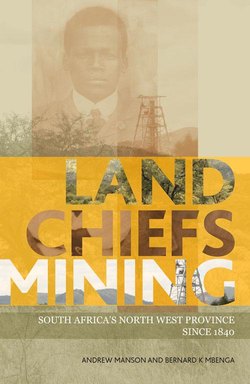Читать книгу Land, Chiefs, Mining - Andrew Manson - Страница 11
На сайте Литреса книга снята с продажи.
ОглавлениеCHAPTER 2
The South African War and its aftermath 1899-1908
INTRODUCTION
The South African War is one of the hinges upon which modern South Africa turns. On the highveld, especially, it swept aside the old Boer states and ruling class; it transformed the human geography of the region; and it thrust entire communities into new political and economic relationships. After the war’s end, the British set about modernising the South African state.
In the region of the north-western bushveld, the South African War involved every African society in varying degrees, some total and committed participants, others onlookers inevitably and reluctantly swept up in the dramatic episodes of the conflict. In this chapter we explore and analyse the varying roles of the black participants in the South African War and its impact upon them. The particular focus is on the the baKgatla, the baRolong, and the baHurutshe, with passing reference also to minor players such as the baFokeng, baTlokwa and others.
Most of the contemporary or early accounts of the mis-termed ‘Anglo-Boer’ War perpetuated the myth that it was a ‘white man’s war’ that did not involve Africans. Only comparatively recently was this laid to rest when several historians, in particular Peter Warwick and Bill Nasson, revealed the very active participation by black people in a wide range of roles in the war (including armed combat) on both the British and Boer sides.1 All these historians have shown that blacks were both ‘active shaping agents as well as victims’ in the war.2
The reasons for the conflict, discussed and debated in many books and academic articles,3 apply to the major combatants at national level; in the various regions where Africans became involved in the war they did so because of their own local, specific reasons, some of them deep-seated historical grievances.
BaKgatla participation in the War4
The baKgatla harboured specific historical grudges against the Boers. One was the Boers’ incessant demands for their labour over several decades which finally culminated in the flogging of Kgamanyane by Kruger discussed in Chapter 1. In both the Pilanesberg and Mochudi, this episode was remembered with bitterness by practically all of the older baKgatla men and women who still retain graphic accounts of the flogging and the subsequent division of the morafe. It was because of this that they saw the war as an opportunity to take revenge on the Boers, to regain the land in the Pilanesberg which they had lost to the Voortrekkers, and to reunite their divided people.5
The decision to involve the Pilanesberg baKgatla in the war was made in Mochudi, the seat and source of their chiefly authority from 1870, by their paramount chief Linchwe. Following the Derdepoort episode (discussed below), the baKgatla anticipated and prepared themselves for possible Boer reprisals6 as, owing to the strong unity between the baKgatla on both sides of the border, any large-scale conflict facing one section involved the other as well. Every regiment in Mochudi had its counterpart (with the same name) in Saulspoort, the Mochudi being the senior – there were, for example, two Makoba regiments, the Mochudi under Ramono, and the Saulspoort under Ditlhake.7
On the eve of the war, the British and the Boers feared that discontented African groups might use the war to advance their own agendas and possibly even attempt to overthrow white rule – this explains the elaborate preparations by both sides to counter any possible African insurrection. The fear was not totally misplaced because many African chiefdoms, including the baKgatla, took the British side, convinced that it would be victorious and that such support would gain them considerable political and economic benefits after the war.8
Some five months before the war, official British policy was still against using blacks in armed combat against the Boers. There were two reasons. First, after their defeat in the Anglo-Boer War of 1880 the British were uncertain about black loyalty in the Transvaal. Second, the British considered it morally unacceptable to employ blacks in combat in a war between two white societies. The practical realities of the war, however, were such that the British would need African assistance, but the British authorities were worried about the loyalty of Linchwe, for half of his followers lived under Boer rule and if he took sides it could mean exposing his people to obvious danger. The contemporary writer, LS Amery, expressed Linchwe’s predicament aptly when he wrote that ‘his [Linchwe’s] interests, even in peace time … pulled him two ways’.9 As the possibility of war became increasingly real, British concern grew with the realisation that the baKgatla were potentially their most dependable military allies, whom they had moreover rated as ‘good fighters’.10 The British needed Kgatla military assistance. Moreover, the railway line which was so essential for the transportation of the (British) Rhodesian troops to the south passed through the centre of Kgatla territory. Consequently, the British decided on a psychological show of force to influence Linchwe into supporting them. Just before the outbreak of war, some 500 British South Africa Police (BSAP) and Southern Rhodesian volunteers were sent to Mochudi.
